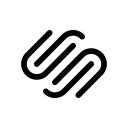How I Started A $450K/Month Travel Agency That Curates Surprise Vacations
Hello! Who are you and what business did you start?
Hi! My name is Lillian Rafson, and I’m the founder + CEO of Pack Up + Go. We’re a travel agency that plans curated getaways around the United States. The catch? Your destination is a surprise until the day you depart! Since launching in 2016, we have sent 25,000+ travelers to 100+ destinations nationwide.

Our mission is to encourage the pursuit of wonder, spontaneity, and exploration by planning surprise getaways that champion the traveler experience, promote responsible tourism, and create community. We believe that travel can build bridges and that vacations should be stress-free, fun, and exciting! We work to make the world a better place by supporting as many small businesses as we can in our destination cities.
We offer four...
Download the report and join our email newsletter packed with business ideas and money-making opportunities, backed by real-life case studies. Download the report and join our email newsletter packed with business ideas and money-making opportunities, backed by real-life case studies. Download the report and join our email newsletter packed with business ideas and money-making opportunities, backed by real-life case studies. Download the report and join our email newsletter packed with business ideas and money-making opportunities, backed by real-life case studies. Download the report and join our email newsletter packed with business ideas and money-making opportunities, backed by real-life case studies. Download the report and join our email newsletter packed with business ideas and money-making opportunities, backed by real-life case studies. Download the report and join our email newsletter packed with business ideas and money-making opportunities, backed by real-life case studies. Download the report and join our email newsletter packed with business ideas and money-making opportunities, backed by real-life case studies.
























